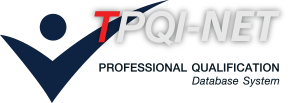หน่วยสมรรถนะ
Minor repair for aircraft electrical hardware or parts.
สาขาวิชาชีพการบิน
รายละเอียดหน่วยสมรรถนะ
| 1. รหัสหน่วยสมรรถนะ | AVT-BWVP-221A |
| 2. ชื่อหน่วยสมรรถนะ | Minor repair for aircraft electrical hardware or parts. |
| 3. ทบทวนครั้งที่ | / |
| 4. สร้างใหม่ |
|
ปรับปรุง |
|
| 5. สำหรับชื่ออาชีพและรหัสอาชีพ (Occupational Classification) | |
|
7232 Aircraft engine mechanics and fitters |
|
| 6. คำอธิบายหน่วยสมรรถนะ (Description of Unit of Competency) | |
| This skill unit requires the use of workforce skills and knowledge of standards and cabling specifications to manufacture aircraft electrical looms, harnesses and cables in hangars and aircraft maintenance workshops during maintenance scheduled or unscheduled. The work can be done individually or as part of a team. | |
| 7. สำหรับระดับคุณวุฒิ |
| 1 | 2 | 3 | 4 | 5 | 6 | 7 | 8 |
|---|---|---|---|---|---|---|---|
| 8. กลุ่มอาชีพ (Sector) | |
| 7232 Aircraft Mechanics | |
| 9. ชื่ออาชีพและรหัสอาชีพอื่นที่หน่วยสมรรถนะนี้สามารถใช้ได้ (ถ้ามี) | |
| N/A | |
| 10. ข้อกำหนดหรือกฎระเบียบที่เกี่ยวข้อง (Licensing or Regulation Related) (ถ้ามี) | |
| ICAO Doc 7192 / EASA Part 66 | |
| 11. สมรรถนะย่อยและเกณฑ์การปฏิบัติงาน (Elements and Performance Criteria) |
| หน่วยสมรรถนะย่อย (EOC) | เกณฑ์ในการปฏิบัติงาน (Performance Criteria) | รหัส PC (ตามเล่มมาตรฐาน) |
รหัส PC (จากระบบ) |
|---|---|---|---|
| 101403.01 Interpret specifications and organise materials. |
101403.01.01 Specifications are interpreted to determine the dimensions and procedure for fabrication. |
101403.01.01 | 199322 |
| 101403.01 Interpret specifications and organise materials. |
101403.01.02 Appropriate materials, tools and equipment are selected and prepared for the particular specification requirements. |
101403.01.02 | 199323 |
| 101403.02 Minor repair for electrical components or parts. |
101403.02.01 Assembly or fabrication jigs, where applicable, are aligned to ensure accurate fabrication of components. |
101403.02.01 | 199320 |
| 101403.02 Minor repair for electrical components or parts. |
101403.02.02 Components or parts are repaired in accordance with required specifications while observing all relevant work health and safety (WHS) requirements including the use of material safety data sheets (MSDS) and personal protective equipment (PPE). |
101403.02.02 | 199321 |
| 101403.03 Test / repaired components or parts. |
101403.03.01 Test equipment and/or rigs are used, where applicable, to confirm serviceability of finished components. |
101403.03.01 | 199318 |
| 101403.03 Test / repaired components or parts. |
101403.03.02 Repaired components are tagged, sealed and packaged within specified procedures. |
101403.03.02 | 199319 |
| 12. ความรู้และทักษะก่อนหน้าที่จำเป็น (Pre-requisite Skill & Knowledge) | |
|
101309 Remove and install miscellaneous aircraft electrical hardware/components |
|
| 13. ทักษะและความรู้ที่ต้องการ (Required Skills and Knowledge) | |
|
(ก) ความต้องการด้านทักษะ EASA Part 66: Module 6Materials and Hardware (ข) ความต้องการด้านความรู้ EASA Part 66: Module 6Materials and Hardware |
|
| 14. หลักฐานที่ต้องการ (Evidence Guide) | |
|
(a) Performance Evidence |
|
| 15. ขอบเขต (Range Statement) | |
|
This field allows for different work environments and conditions that may affect performance. Essential operating conditions that may be present (depending on the work situation, needs of the candidate, accessibility of the item, and local industry and regional contexts) are included. |
|
| 16. หน่วยสมรรถนะร่วม (ถ้ามี) | |
| N/A | |
| 17. อุตสาหกรรมร่วม/กลุ่มอาชีพร่วม (ถ้ามี) | |
| N/A | |
| 18. รายละเอียดกระบวนการและวิธีการประเมิน (Assessment Description and Procedure) | |
|
• The assessment are based on combination of paper exams, interviewing, and practical demonstrations depending on the assessors’ judgement. |
|
